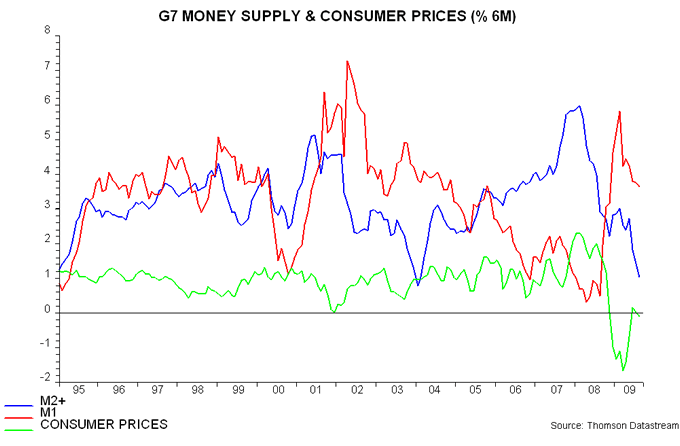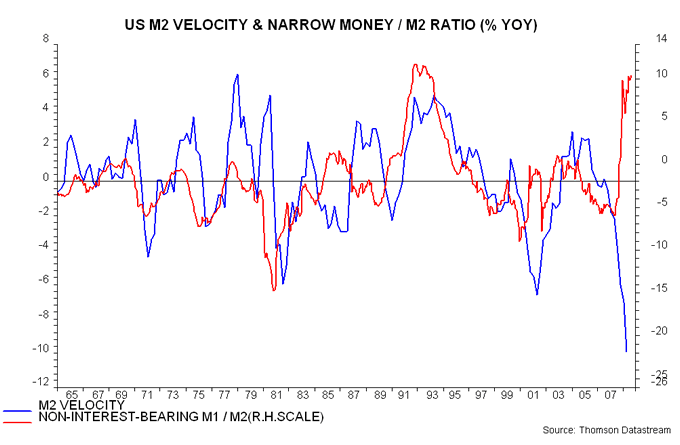Velocity rising after crisis-induced plunge
G7 broad money has slowed significantly this year, with an estimated rise of only 2% annualised in the six months to August – see first chart. A theme of recent posts is that this weakness is not of undue concern because the velocity of circulation is likely to be rebounding after a plunge in 2008 and early 2009. Expressed differently, the demand to hold cash has fallen in response to record low interest rates and reviving markets so weak monetary growth does not signal insufficient liquidity to support an economic recovery.
Prior posts have also noted that a rise in broad money velocity is likely to be associated with a shift of funds out of savings accounts into cash and accounts used for transactions, implying a pick-up in narrow money relative to broad money. Continued solid growth in G7 M1 – an estimated 7% annualised in the six months to August – is therefore reassuring.
The relationship between velocity and the ratio of narrow to broad money is demonstrated for the US in the second chart. Velocity is normally calculated using nominal GDP and money supply data for the same period but this ignores lags in the transmission mechanism; the measure in the chart divides GDP by M2 six months earlier. For narrow money, "non-interest-bearing M1" is used, comprising currency, traveller's cheques and "demand deposits" – interest-free accounts with a cheque facility.
There is a clear pattern of changes in the narrow to broad money ratio leading swings in velocity. The ratio is currently growing at an annual rate of 10%, which is the fastest since 1992-93, when M2 velocity rose by 4-5% per annum. A similar increase over the coming year would imply a strong rebound in nominal GDP – even if M2 shows little growth.


Reader Comments